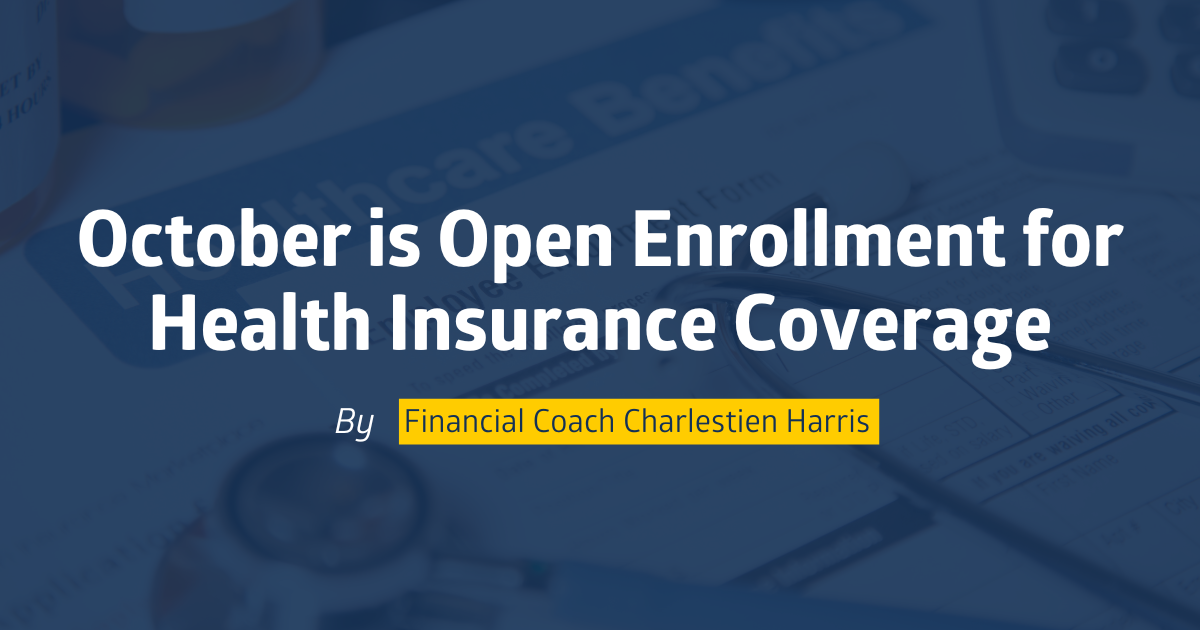By Charlestien Harris
Open enrollment is the time to review the health plans offered by your employer or compare options in the health insurance marketplace. Be sure to compare plans in the marketplace and evaluate the ones offered by your employer to choose the best coverage. While sticking with your current plan might seem convenient, your options may have changed, or you could be overpaying for unnecessary coverage. Comparing your options annually is essential, especially when you experience major life events such as marriage, having children, a salary increase, or increased healthcare needs.
Open enrollment season can catch you off-guard, leaving you approaching the deadline without much thought. This is why many people end up retaining the same plan year after year. But that plan might not be the best choice for you, or there could be a better way to balance coverage and cost. Preparing for open enrollment ensures you make an informed decision.
Here are some tips to help you buy health insurance and choose the right plan for your needs:
Tip #1 – Know your open enrollment deadline.
While most Americans get health insurance through their employer, there is no standard open enrollment period for employer plans. The business chooses the open enrollment period, usually beginning in October. Check with your benefits department to find out your open enrollment period. If you don’t have access to employer-based insurance, there are other options, such as buying an individual or family plan via the Affordable Care Act (ACA) exchanges. In Mississippi, the ACA open enrollment period for individual/family health coverage runs from November 1 to January 15, with enrollments required by December 15 for coverage effective January 1.
Tip # 2 – Review your health insurance plan options.
There are several types of health plans from which to choose:
- Preferred Provider Organization (PPO): PPO plans are popular due to their flexibility. While premiums are higher than other plans, you can see any doctor or specialist in your plan network and go out of network, though it will cost more.
- Health Maintenance Organization (HMO): HMOs have lower premiums but require you to stay in-network and get referrals from your primary care physician (PCP) for specialists.
- High Deductible Health Plan (HDHP): HDHPs have low premiums and high deductibles, making them a cost-effective option if you don’t require frequent healthcare services.
Tip #3 – Compare premiums and out-of-pocket costs.
When choosing a plan, compare premiums, deductibles, copays for doctor visits, urgent care, emergency room visits, and prescription drugs. Consider coinsurance payments and evaluate how often you use healthcare services. Some plans may offer low premiums but higher costs when you use healthcare services, particularly HDHPs.
Tip #4 – Compare benefits, coverage, and provider networks.
Health insurance plans must cover essential health benefits. These include emergency care, outpatient care, hospitalization, pregnancy and newborn care, mental health and substance abuse services, prescription drugs, rehabilitation services, lab tests, preventive and wellness services, and dental and vision care for children. While these services offer more protection, they come with a higher price tag. It’s crucial to compare plans to ensure you get the best coverage for your needs.
Open enrollment is a crucial time of year, and choosing the right health plan for yourself and your family is vital. Review your employer’s information, consult your employer’s human resources department and benefits administrator, and review your health insurance policies if you are self-employed. By doing your homework, you can find the plan that suits you best.
For more information on this and other financial topics, please contact me at Charlestien.Harris@banksouthern.com or call me at 662-624-5776.
Until next week — stay financially fit!
